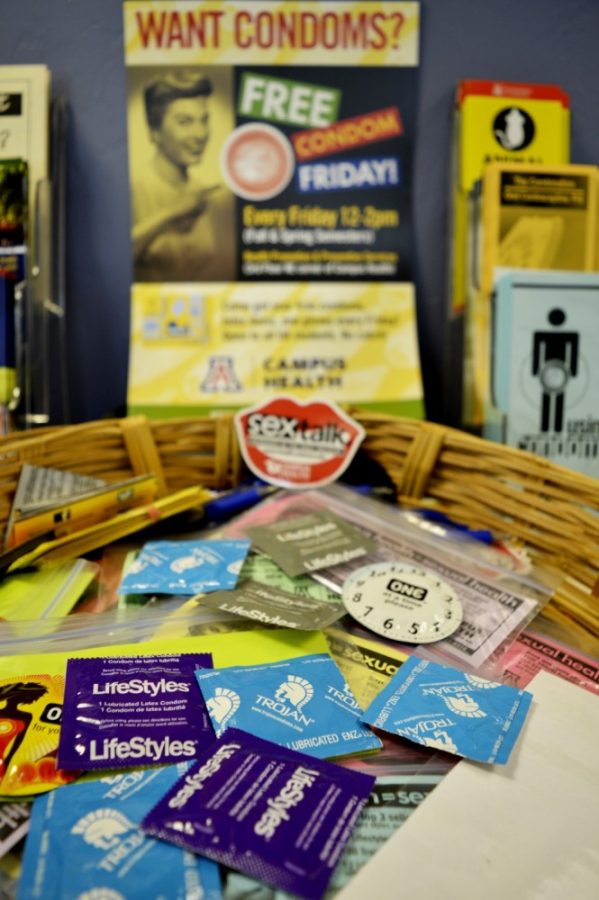Your next hookup may only be a Tinder swipe away. But would you swipe right so eagerly knowing that your next partner may have an STD?
With the rates of sexually transmitted diseases increasing nationwide, Campus Health recommends taking precaution when participating in “hookup culture.”
However, the Campus Health 2017 Health & Wellness Survey indicates that not all students are recklessly hooking up with people.
The role of online dating in the increased STD rates
Many people question the impact and role of online dating and hookup culture for young adults, especially for college students. However, it is not yet demonstrated that online dating really does play a role in the rising numbers of STDs.
RELATED: Wild catfish: UA students hooked by catfishes
The rise in dating apps like Tinder and participation in “hookup culture” does not appear to be affecting many students at UA. In fact, of the 5,438 UA undergraduates surveyed in the 2017 Health & Wellness Survey, about 85% said that they had either no sexual partners over the past school year or had only one partner. On the other hand, 59% of those who were sexually active had not been tested for STDs within the past year.
Data on STDs among students may be hard to truly gauge; however, David Salafsky, director of Health Promotion and Preventive Services at Campus Health, said “one of the issues about asking [whether someone has been tested for STDs] on a survey is that can be a difficult question to ask … We know those numbers tend to be lower than the reality.”
National increased rates of STDs
National surveys on adolescent and young adult STDs differ from the surveys conducted by Campus Health. The Center for Disease Control and Prevention’s 2016 Sexually Transmitted Diseases Surveillance reported significant increases of STD rates among adolescents and young adults.
According to the report, there were a record-breaking 2 million cases of chlamydia, gonorrhea and syphilis in the United States.
Syphilis rates increased substantially in both adolescent and young adult males and females, rising by 13.0% among 15-19-year-olds.
Salafsky said these national reports make him question if what we are seeing is a true increase.
“It appears that we are [seeing an increase in STD testing] and then again, the next question is: Why is this happening? What’s the role of Tinder and online dating apps to kind of facilitate some of this? Do we need to do more in terms of talking about testing and condom usage and those types of things on the public health side?” Salafsky said.
Public perception vs. what we know
Lee Ann Hamilton, the assistant director of Health Promotion & Preventive Services and a public health educator for over 30 years at the UA, discussed how there are apparently rising rates in STDs nationwide and students should take precautions.
“You know when your friend has strep throat, they tell you. You don’t know when your friend has chlamydia,” Hamilton said. “[There is] this perception that [STDs are] not out there, but we’re seeing higher and higher rates.”
Salafsky said that he thinks it’s a possibility that online dating could play a factor. He also adds that the high concern over HIV in the 80s caused people to be very aware of practicing safer sex and condom use, but Salafsky said he wonders if now “we’re kind of getting complacent where we are seeing less precautions being taken to have safer sex.”
There are more factors at play than just the misconception that a rise in online dating necessarily means a rise in reckless behavior among college students.
“I think that the perception is that everybody’s doing it and everybody’s sexually active, but, you know, a fifth of the students [say they] have never had sex,” Salafsky said.
Preventing STDs
Hamilton acknowledged that most people would “rather have sex without a condom. But the reality is that condoms are really effective in preventing STDs and can prevent the things we’re seeing such a [rise] in,” including syphilis, chlamydia and gonorrhea.
RELATED: Lost? Here are a few spots to drop a pin
To prevent STDs, she advised everyone to be selective in partners, have partners get tested before sexual activity and use condoms.
Campus Health provides free condoms every Friday.
“Campus Health is a convenient and well-utilized resource on campus for STD testing,” Salafsky said. “The resources are there … it’s about awareness and getting the message out there. Not all students are doing it and, you know, I think despite what we’re seeing maybe nationally and maybe in some parts of the population, it doesn’t characterize what we see overall, necessarily.”
Follow The Daily Wildcat on Twitter









